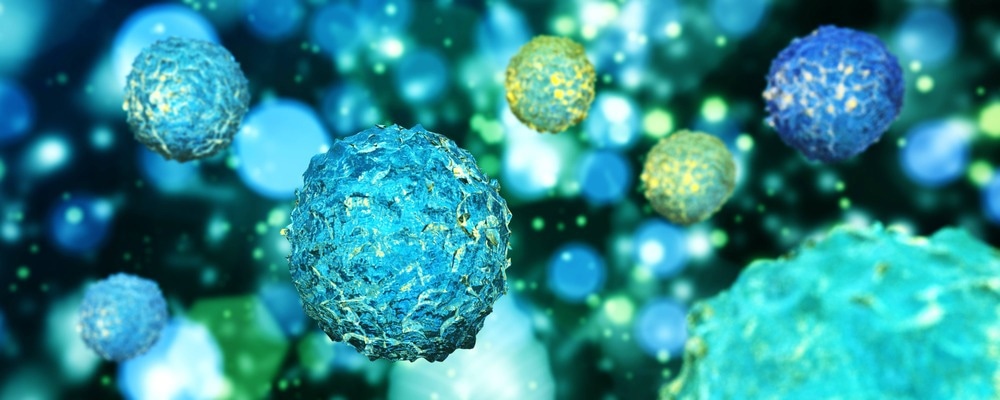Endocrine disruptors have recently drawn significant research attention due to their severe toxicity and harmful environmental impacts. Additionally, it is quite challenging to analyze endocrine disruptors since they can only be monitored in aquatic habitats at trace levels.

Study: MXene−reinforced octahedral PtCu nanocages with boosted electrocatalytic performance towards endocrine disrupting pollutants sensing. Image Credit: ustas7777777/Shutterstock.com
A pre-proof paper from the Journal of Hazardous Materials tackles this issue by fabricating an electrode made of MXene−reinforced octahedral nanocages. The as-prepared electrode displayed enhanced electrocatalytic activity towards endocrine disruptors due to its distinctive hollow and porous structure.
Endocrine Disruptors: Overview and Environmental Impacts
Human activities have a significant impact on the environment, especially aquatic ecology. Rapidly expanding manufacturing and agricultural activities result in the haphazard discharge of hazardous effluents, posing major risks to human health and aquatic ecosystems.
Endocrine disruptors are harmful pollutants that interfere with the synthesis, emission, transportation, and removal of the body's natural hormones. The endocrine disruptors can enter the food chain and progressively build up in the adipose tissues of animals, eventually reaching humans.
Continuous exposure to endocrine disruptors, even at extremely low concentrations, has been related to diabetes, cardiovascular disease, neurological impairment, and other major health problems.
4nonylphenol (NP), a major endocrine disruptor, is the main degradation product of nonylphenol ethoxylate detergents. The absorption of these detergents in the vital organs of aquatic species could be extremely harmful to their reproductive cycle.
Bisphenol A is another well-known endocrine disruptor that is used in the production of poly(carbonate), phenolic resins, and plastic goods like cans, bottles, and gadgets. Bisphenol A traces can readily move into the ecosystem, water supply, and food products, causing endocrine disruption and immune system damage in infants.
Electrochemical Analysis for Detection of Endocrine Disruptors
Electrochemical detection techniques have proven to be quite effective for detecting endocrine disruptors in ecological and biological materials. These approaches are widely used because of their many benefits, including easy miniaturization, in situ measurement, quick reaction, high responsiveness, convenience, and cheap cost.
However, the intrinsic redox reactions of endocrine disruptors on bare electrodes have low responsiveness and precision. In this context, nanotechnology has shown promising results in detecting endocrine disruptors at micromolar concentration ranges.
Bi-metallic nanostructures are suitable for electrocatalysis owing to their abundance of active spots and high surface energy caused by surface imperfections. By integrating the advantages of bimetallic systems with hollowed permeable nano polyhedron heterojunctions, innovative alloy materials can be created for remarkable electrochemical detection of endocrine disruptors.
MXene: The Future of Electrochemical Detection Systems
Mxene, a unique two-dimensional (2D) material, has piqued the interest of researchers as a possible contender for obtaining ultrahigh responsiveness and long-cycle durability in next-generation electrochemical sensors.
MXene layers, like graphene, have vast interlayer gaps that allow analytes to diffuse from the solution to the surface of the electrode, while the 2D planes of MXene act as a network of nanoscale circuits for rapid electron transmission. Moreover, extensive active spots on the surface of MXene flakes are uncovered, allowing for hybridization with other active substances to provide an improved signal-to-noise ratio for electrochemical devices.
Titanium carbide (Ti3C2Tx), a prominent member of the 2D MXene group, is noted for being more stable and easier to fabricate than other Mxene groups. Ti3C2Tx also has certain distinct features, including hydrophilic interfaces, a wide surface area, a high loading capability, and exceptional mechanical qualities. As a result, it is an excellent choice for a wide range of electrochemical sensing applications.
Highlights and Key Developments of the Current Study
In this study, the researchers described a unique approach for rationally tailoring hollow and porous bimetallic electrodes made of MXene with outstanding electrocatalytic activity.
The researchers analyzed the as-prepared electrode to understand the desired formation of stable heterocomplexes by coupling independent bimetallic nanoparticles with flexible two-dimensional substances (MXene) for electrochemical detection of endocrine disruptors.
The MXene-based electrode demonstrated exceptional electrocatalytic detection capacity for endocrine disruptors, with ultrawide linear values and sub-nanomolar limits of detection. The outstanding electrode performance is related to the high specific area, quick electrochemical kinetics, respectable electrical catalytic ability, and the synergistic interaction between platinum, copper, and MXene.
The benefits of this design include high sensitivity, satisfactory resistance to interference substances, excellent reproducibility, reliable stability, and favorable detection performance in water samples.
Conclusively, this research could pave the way for the rational design and efficient synthesis of alternative hollow and porous multimetallic nanostructures for various electrocatalysis and electroanalysis applications in environmental protection.
Reference
Liu, X., et al. (2022). MXene−reinforced octahedral PtCu nanocages with boosted electrocatalytic performance towards endocrine disrupting pollutants sensing. Journal of Hazardous Materials. Available at: https://doi.org/10.1016/j.jhazmat.2022.130000
Disclaimer: The views expressed here are those of the author expressed in their private capacity and do not necessarily represent the views of AZoM.com Limited T/A AZoNetwork the owner and operator of this website. This disclaimer forms part of the Terms and conditions of use of this website.